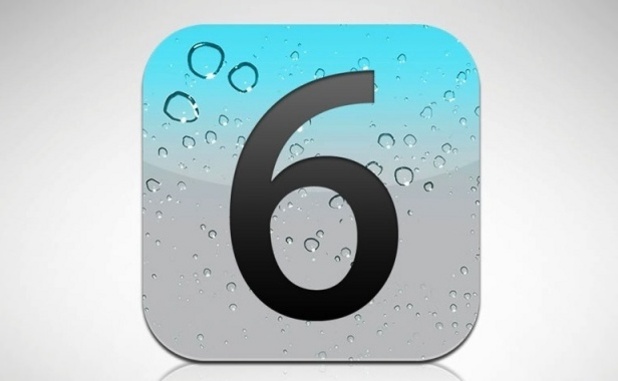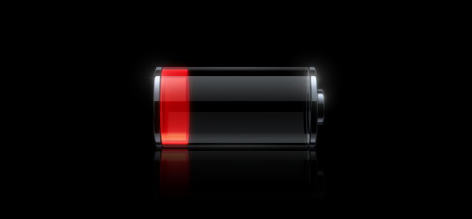With each update of the operating system that powers Apple’s mobile devices, many users experience issues with decreased battery life. The increasing popularity of location based apps and iCloud syncing are partly to blame for the increased consumption. Increasing available of LTE increases battery usage as well. By changing some simple settings on your Apple device, you should be able to improve your battery life and charge less frequently.
When iOS 5 first was released, and now with iOS 6 being rolled out, we are hearing of issues with shorter battery life. With iOS 5 I had issues with my iPad. My neighbor swears that his new iPhone 5 (with LTE) has radically decreased battery life. iOS 5 had some obvious battery draining bugs that have subsequently been fixed. Many suspect iOS 6 has a few similar issues. However, every Apple device owner should understand the methods for tweaking his or her device for the longest battery storage.
Of course, the most efficient, but hardly palatable, way to improve battery life is not to use the device at all. So I will list the least invasive and easiest methods for improving battery life first. The most difficult and more limiting recommendations will be listed at the bottom. Start at the top, and if you don’t get the results you desire, work down the list.
By the way, if you are worried about your battery life, you will want to enable Show Battery Percentage so you can more accurately measure your battery levels.
Do I have a battery problem?
Heavy internet, GPS, or gaming use will crush the battery on any device, but with minimal usage, any apple devices should easily make it through a day on one charge. At the end of the day your standby time should be much greater than your usage time. If the amount of time recorded for your standby time is much lower than you expect, that means your phone is using energy when you do not expect it.
You can check this through the following steps:
Settings -> General -> Usage
Do I need to recalibrate my battery?
LIthium ion batteries like Apple products use usually do not benefit from a “recalibration” by completely draining and full recharging the batteries. In fact, doing this too frequently will decrease lithium battery life. Apple does recommend doing it at least once a month to keep the battery monitoring system working correctly. Most people with battery drain issues will be draining and recharging frequently already. Although easy enough, recalibration is almost never going to help.
Recommendations
1. Disable Sending of Diagnostic and Usage Data. When this is enabled, Apple receives information from the users to help tweak and fine tune future editions of the software. However, in some cases a badly performing app can repeatedly trigger crash reports. Some of these crash reports are unusually large as well. Sending this data over and over can drain a battery relatively quickly. As disabling this will cause the user no noticeable effects, this is the first thing I recommend. You can disable sending this data by doing the following:
Setting -> General -> About -> Diagnostics & Usage -> Don’t Send
2. Disable Bluetooth / Wi-Fi. This one is obvious and is an old trick. If you never use bluetooth, you can save a nice junk of juice by disabling Bluetooth searching and connecting on your device. Likewise, if you are in an area where you know you are not going to be using wi-fi, you can temporarily turn it off. Although obvious, these hints are essential when using heavily dependent GPS tracking apps over long periods of time. Running and tracking apps are well known battery drainers through the heavy use of GPS; however, when you exercising or hiking, you are really unlikely to need bluetooth or wi-fi. In fact, if you don’t even want to receive calls during this time, just place it in airplane mode. Turning these unessential services off improves your chances of completing that 20 miler marathon prep with some battery still intact. The only downside is you have to remember to turn them back on when you return to civilization.
Settings -> Wi-Fi
Settings -> General -> Bluetooth
3. Disable Automatic Time Zone Determination. The way OS X determines your location and sets your time zone automatically is very clever. However, in certain circumstances this frequent use of the GPS can cause battery drain. By enabling this only when you travel, you remove a potential waste of battery.
Settings -> Location Services -> System Services -> Setting Time Zone
4. Disable Useless Locations Services and Notifications. Each time your device uses the GPS to determine your location or wakes up your phone to deliver a notification, a tiny bit of battery is used. If you are using these excessively, those tiny bits add up. Review these areas and disable what you don’t need.
Settings -> Location Services -> Select individual apps to disable
Settings -> Notifications -> Select individual adds to remove from Notification Center
5. Decrease Screen Brightness. I like my screen as bright as the sun. Literally, I crank up the brightness as high as it will go and turn off Auto-Brightness. Powering that bright screen drains battery. If you can tolerate it, do not be like me and go ahead and decrease your brightness. You will definitely save battery.
Settings -> Brightness
6. Disable Push Email. Apple has never been very robust in the enterprise environment. Many “pushable” email account connections are still not perfect. If you can tolerate not receiving your email instantaneously, changing your email to fetch will improve anybody’s battery. Fetching less frequently will use even less battery. If you have a troublesome email account, this may fix your battery issues altogether.
Settings -> Mail, Contacts, Calendars -> Fetch New Data -> Push -> Off
Settings -> Mail, Contacts, Calendars -> Fetch New Data -> Set Fetch Rate to lowest tolerable time.
7. Decrease or disable iCloud. Many people have reported that iCloud seems to have several bugs that decrease battery life. Since iCloud is a large component of iOS 5, I hesitate recommending that someone not use it. If you have a MobileMe account, continuing to use it until iCloud is more stable is one option. What I am currently recommending is just temporarily disabling it for a couple of days to see if the battery issues are related to it. If it doesn’t help, then just turn it back on. Decreasing what you sync over iCloud will help. Decreasing iCloud sync over cellular should improve battery life significantly too:
Settings -> iCloud -> Documents & Data -> Use Cellular -> Off
8. Remove and replace email accounts. As noted above, poorly performing email accounts are the root of many users’ issues with battery life. These bugs are usually carried over from settings in iOS 4. Removing and then re-adding these email accounts should remove these issues. Of course, deleting and then replacing your email accounts is highly annoying. Make sure you have the prior settings written down (or that the information in iTunes is correct) before deleting them. Removing your accounts can be performed through the following command:
Settings -> Mail, Contacts, Calendars -> Select Account -> Delete Account
9. Wipe and Reset. Nuking your phone and starting over is pretty painful; however, this frequently is the only true option that works. There seems to be a bug in systems restored from backup that causes massive battery drain. Make sure everything has been moved off your phone and you are well synced with iTunes. Wipe your phone and then setup the device from scratch on iTunes again without restoring from backup. The command to totally reset and wipe your device can be found at the following:
Settings -> General -> Reset -> Erase All Contents and Settings
Selectively performing these tweaks will improve anybody’s battery life. If you are experiencing one of the bugs in iOS 5 that is crushing your battery life, these hints can save your sanity. Good luck. If you figure out anything else that helps, feel free to post it in the comments below.


